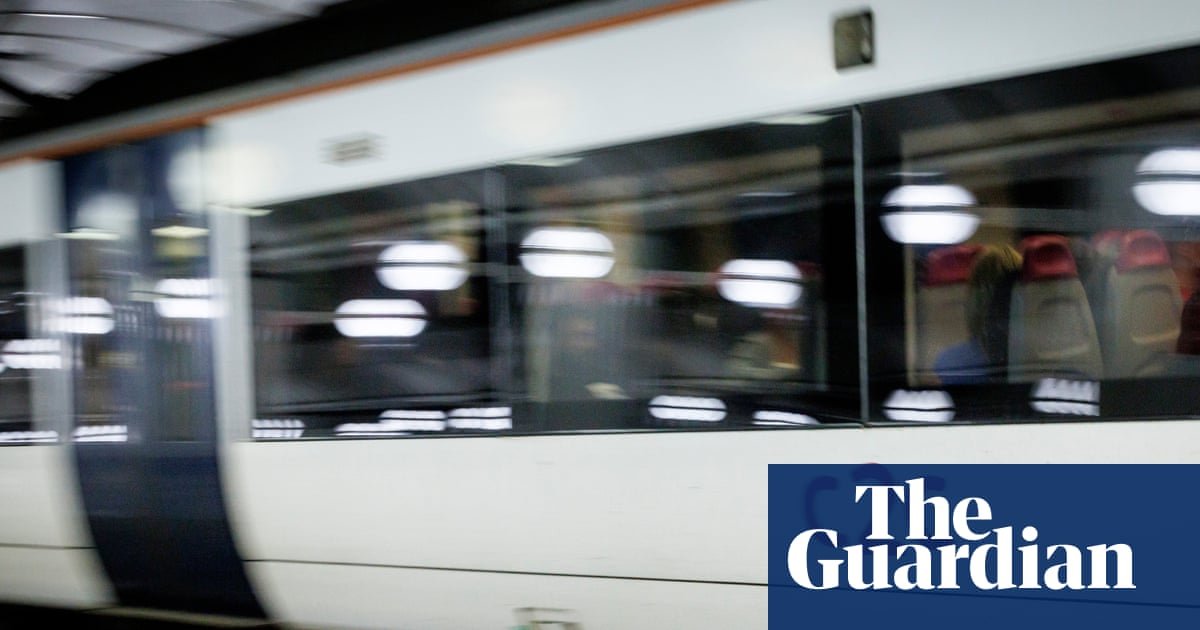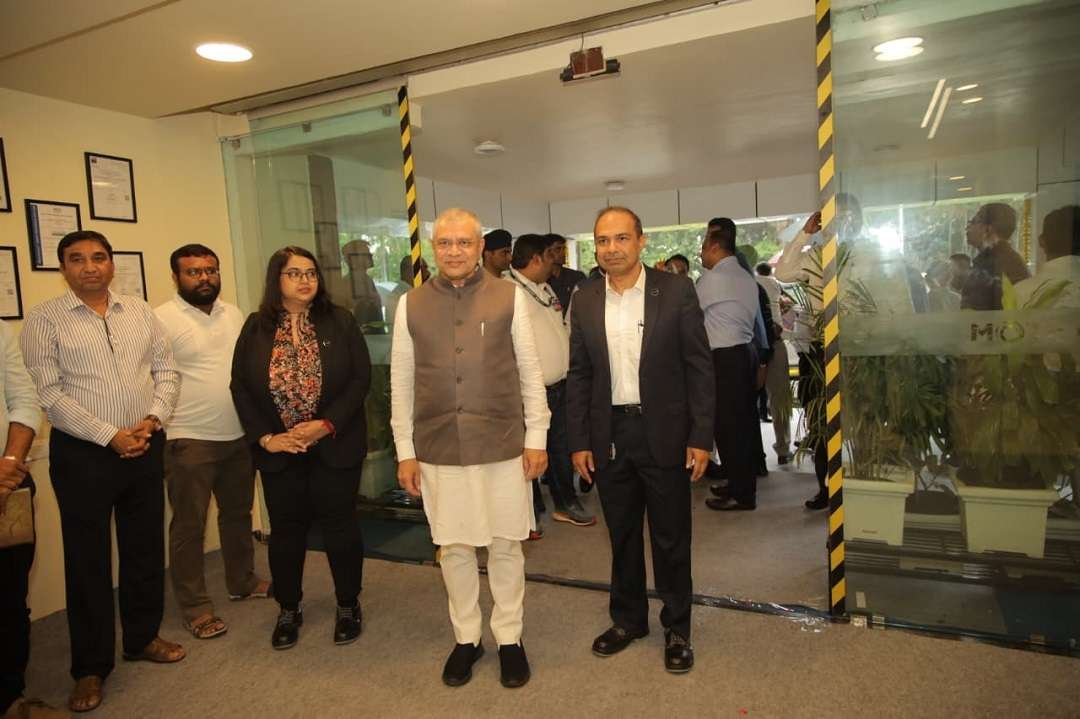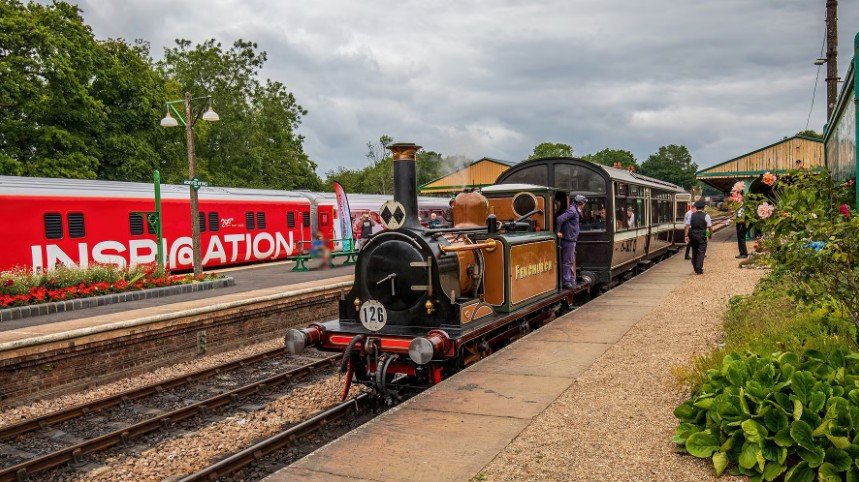Rail & Road
Hundreds of DfT civil servants to be moved to state-owned rail operator | Rail industry

Hundreds of civil servants are being transferred from the Department for Transport to the state-owned rail operator as the government looks to cut Whitehall posts and overhaul the railways.
Ministers have been pushing to find savings from across the civil service, but a government spokesperson denied there would be immediate redundancies in what bosses told staff was a “critical phase” of the creation of Great British Railways (GBR).
However, industry sources believe jobs will go, as employees consider their future outside the civil service, and the government attempts to cut costs and reduce duplication in a nationalised railway.
A message to staff from two rail director generals, Richard Goodman and Alex Hynes, said the DfT was “entering an exciting and critical phase of rail reform” and had “updated colleagues involved in the moves about what this approach” would mean for them.
A formal consultation process is beginning that could lead to 300 employees being moved out over the course of this year, with many heading to offices in London Waterloo, as the state holding company DfT Operator Limited (DfTO) takes more train operators under its control.
The Essex commuter service C2C was brought into public hands a week ago. This followed the first planned nationalisation, of South Western services, in May.
Under government plans, the country’s remaining passenger services will be renationalised and the railway will be run by GBR, which will also incorporate the functions of Network Rail to integrate track and trains.
A DfT spokesperson said: “There will be no redundancies as a result of these moves into DfTO. The 200-300 DfT staff involved will transfer to DfTO, bringing their work, skills and expertise closer to the frontline of a publicly owned railway. This will bring us a step closer to ending the fragmented railway we see today, towards a railway run as a business by industry professionals.”
The DfTO chief executive, Robin Gisby, will not see through the transition to GBR, after it was announced that he would be stepping down in December.
Gisby had run state-owned train operations for seven years, and had said two weeks earlier that he would continue to work through the transition. However, sources indicated that GBR would now probably not be up and running until 2028.
The DfT spokesperson added: “DfTO is about to enter a pivotal phase and will be appointing a successor to lead the publicly owned operators through this change, bringing the network together under one mission.”
The chief executive of Network Rail, Sir Andrew Haines, is also retiring in the autumn. His successor was last week named as Jeremy Westlake, now chief financial officer.
after newsletter promotion
Haines and Gisby are leaving at a time of the biggest operational upheaval in Britain’s railways for many years, the December 2025 timetable change.
The new timetable is intended to allow for the benefits of billions of pounds spent upgrading the east coast mainline, to include faster trains to Edinburgh and more services to stations along the route.
Previously expected last December, it was postponed amid fears of a repeat of the chaos that followed a switch in May 2018. Sources said the new timetable would still be “challenging” but the industry was under pressure to demonstrate the worth of the investment.
Passengers on the line faced disruptions on Sunday when overrunning engineering works and a power failure in north London meant no trains could run out of Kings Cross until the afternoon.
Rail & Road
Indian Railways Strengthens Global Presence in Rail Exports under ‘Make in India, Make for the World’ Drive: Ashwini Vaishnaw | Machine Maker – Latest Manufacturing News | Indian Manufacturing News – Latest Manufacturing News | Indian Manufacturing News

Union Minister for Railways, Ashwini Vaishnaw, recently visited Alstom’s manufacturing facility in Savli, Vadodara—one of India’s key hubs for rail production. During his visit, he reviewed operations and maintenance practices, commending Alstom’s tailored approach to designing solutions for different client needs.
The Minister proposed collaboration between Alstom and Gati Shakti Vishwavidyalaya to create joint training programs, and encouraged leadership from railway production units to conduct learning visits to the Savli facility. Discussions also explored the integration of digital technologies such as sensors and advanced analytics for predictive maintenance.
The Savli unit plays a vital role in supporting the government’s industrial initiatives by producing advanced metro and commuter rail cars for both domestic use and export. Since 2016, India has exported over 1,000 rail cars for global projects. Of these, 450 cars manufactured at the Savli plant were delivered to Australia for the Queensland Metro initiative. More than 3,400 Indian engineers are working alongside teams at Alstom’s global sites, further strengthening India’s contribution to international railway infrastructure.
In terms of component exports, the Savli unit has shipped over 3,800 bogies to countries such as Germany, Egypt, Sweden, Australia, and Brazil. It has also supplied more than 4,000 flatpacks to Austria. Alstom’s Maneja unit has exported over 5,000 propulsion systems to multiple international locations. Indian teams are currently leading 27 global signalling projects and supporting over 40 others, with Bangalore’s Digital Experience Centre playing a key role in delivering next-generation solutions powered by connected technologies.
India’s rail export portfolio continues to expand under the “Design, Develop, and Deliver from India” vision. Metro coaches have been shipped to Australia and Canada; bogies to the UK, Saudi Arabia, France, and Australia; propulsion systems to Europe and Latin America; and locomotives and passenger coaches to African and South Asian nations. This growth not only reinforces India’s status as a reliable global supplier but also fuels domestic job creation and skills development, as highlighted by the Minister during his interaction with the press.
Alstom is dedicated to advancing a low-carbon future by delivering innovative and environmentally responsible transport solutions that enhance passenger experience. From high-speed trains and metros to monorails, trams, and comprehensive turnkey systems—including services, infrastructure, signalling, and digital mobility—Alstom provides one of the most extensive product and service portfolios in the rail industry.
Operating across 63 countries and backed by a diverse workforce of over 80,000 professionals from 175 nationalities, the company channels its expertise in design, innovation, and project execution to address critical mobility needs around the world. Listed in France, Alstom reported revenues of €16.5 billion for the fiscal year ending March 31, 2023.
In India, Alstom stands out as the only multinational company offering a full range of sustainable mobility solutions tailored to the country’s unique requirements. From value-driven platforms to cutting-edge technologies, Alstom has become a key contributor to India’s evolving transport landscape. Recognized as a vital player in the nation’s ‘Rail Revolution,’ the company plays a crucial role in advancing both passenger and freight mobility.
With six manufacturing facilities and four major engineering centres across India, Alstom supports not only domestic infrastructure development but also fulfills global project demands. The company has introduced numerous first-of-its-kind technologies in India, offering advanced rolling stock, signalling systems, and railway infrastructure in line with global standards.
Aligned with the Government of India’s Make-in-India and Aatmanirbhar Bharat initiatives, Alstom continues to strengthen its local supplier network and expand its sourcing footprint. The company’s commitment to innovation, sustainability, and local engagement reinforces its position as a trusted partner in shaping the future of mobility in India and across the globe.
Rail & Road
The Union Pacific-Norfolk Southern Merger and Its Implications for the U.S. Freight Rail Industry

The U.S. freight rail industry is on the brink of a seismic shift. Union Pacific (UNP) and Norfolk Southern (NSC), two of the nation’s largest Class I railroads, are in advanced merger discussions that could create the first true transcontinental railroad system. With a combined network of 52,215 miles, the deal would span from the West Coast to the Northeast and Florida, bypassing costly interchanges in Chicago and along the Mississippi River. While the companies remain tight-lipped about terms, the potential implications for operational efficiency, regulatory dynamics, and shareholder value are already sparking intense debate.
Strategic Rationale: Efficiency, Scale, and Market Position
The merger’s strategic logic is compelling. Union Pacific’s dominance in Gulf Coast petrochemical traffic and automotive transportation complements Norfolk Southern’s leadership in eastern intermodal services. Together, they would handle 15.3 million carloads and intermodal shipments annually, generating $36 billion in revenue. By eliminating interchange bottlenecks, the combined entity could reduce transit times by 10–15% and unlock $1.5–2 billion in annual cost synergies. For investors, this translates to stronger pricing power and margin expansion in a sector where flat revenue growth has long been the norm.
The strategic case is further bolstered by the industry’s broader trend toward consolidation. The 2023 approval of the Canadian Pacific-Kansas City Southern (CPKC) merger set a precedent for cross-border deals, but the UP-NS combination would be the first major consolidation of two U.S. Class I railroads since 1996. This timing is critical: as rail infrastructure ages and demand for intermodal services grows, scale becomes a non-negotiable competitive advantage.
Regulatory Hurdles: A High-Stakes Test of Public Interest
Despite the strategic appeal, regulatory scrutiny remains a wildcard. The Surface Transportation Board (STB) must approve the merger under its 2001 “public interest” test, which requires proof of enhanced competition and tangible public benefits. Historically, the STB has been cautious about mergers that reduce the number of Class I railroads, and this deal would shrink the count from six to five.
The current STB leadership, including Chairman Patrick Fuchs, has signaled a more open stance toward consolidation than past administrations, but the board’s partisan split and an open seat create uncertainty. Analysts estimate a 75% approval probability, but the terms could be stringent. Potential conditions—such as reciprocal switching agreements for sole-served facilities or divestitures of key routes—could dilute the merger’s value.
The regulatory landscape is further complicated by the Railroad Antitrust Enforcement Act of 2007, which removed the industry’s historical antitrust exemptions. This means the STB must now weigh not just operational efficiency but also the risk of reduced competition in freight pricing and service reliability. For investors, the regulatory timeline is a critical factor: delays could prolong uncertainty, while a favorable outcome could unlock significant value.
Investment Implications: Balancing Opportunity and Risk
For long-term investors, the UP-NS merger represents a high-conviction opportunity. If approved, the combined entity would likely dominate transcontinental freight, improving service reliability and reducing costs for shippers—a tailwind for revenue growth. The potential for a bidding war involving BNSF or CSX also adds a speculative layer, as competition among suitors could drive up valuations.
However, risks abound. A regulatory delay or rejection would likely depress both stocks, as would integration challenges or unmet synergy expectations. Short-term volatility is inevitable, but the long-term outlook hinges on the STB’s ability to balance efficiency gains with competition concerns.
Conclusion: A Defining Moment for the Freight Rail Sector
The proposed UP-NS merger is more than a corporate transaction—it’s a test of the U.S. freight rail industry’s ability to adapt to evolving economic and regulatory realities. For investors, the key is to separate the noise from the signal. While the regulatory path is uncertain, the strategic logic of the deal is robust. Those with a long-term horizon and tolerance for regulatory risk may find this to be a pivotal moment to engage with the sector.
Rail & Road
Special Exhibition Train ‘Inspiration’ Expected to Attract Over Two Thousand Visitors at Bluebell Railway as Railway Double Century Celebrations Continue

Saturday, July 26, 2025
The Inspiration exhibition train, a highlight of the Railway Double Century celebrations, is set to captivate over two thousand visitors during its week-long stay at Bluebell Railway. This special train is not just an exhibition; it’s a window into the history, present, and future of the rail industry. As part of the ongoing Railway Double Century celebrations, the train is offering a unique opportunity to explore the rich heritage of the railway, along with career prospects that are shaping the industry’s future.
With the train stationed at Bluebell Railway, visitors will have a chance to experience cutting-edge railway technology, historical exhibits, and educational activities, all set within one of the UK’s most cherished railway destinations. The event is expected to draw a large crowd, with families, train enthusiasts, and students eager to discover what the railway industry has to offer.
The Inspiration train isn’t just about looking back at the past. It’s about inspiring the next generation of railway workers, showcasing careers in cybersecurity, sustainability, and even drone piloting. As the Railway Double Century celebrations continue, this exhibition plays a pivotal role in connecting the public with the railway’s future, while celebrating the achievements that have made rail transport a cornerstone of Britain’s infrastructure.
Inspiration Exhibition Train at Bluebell Railway Expected to Draw Over 2,000 Visitors
The Bluebell Railway is set to host an exciting and unique event this summer with the arrival of the Inspiration exhibition train, part of the ongoing celebrations for the Railway 200 bicentenary. From July 23 to July 29, this extraordinary train will captivate over 2,000 visitors at Horsted Keynes station, where it will showcase the past, present, and future of the railway industry. The special exhibition aims to inspire the next generation of talent, offering insights into diverse railway careers while also honoring the social purpose of the railway over the last two centuries.
The Inspiration train, curated in collaboration with the National Railway Museum, is the only exhibition train traveling across the UK. It has already made waves with its first successful stops at London Waterloo and Margate, and its stop at the Bluebell Railway is expected to be one of its most popular. This remarkable train, part of a nationwide tour, is expected to attract hundreds of thousands of visitors over its 12-month journey, shedding light on the rich history and technological innovations of the railway industry.
Railway 200: A Celebration of Connectivity and Career Opportunities
The Railway 200 campaign, backed by the government and various rail industry partners, is celebrating the tremendous impact the railway has had in connecting people and goods across the country for over 200 years. The Inspiration exhibition train is not just a celebration of the past but also a chance to explore the future. Visitors will have the opportunity to discover careers they may not have known existed, including roles in cybersecurity, sustainability, and drone piloting, which are increasingly becoming part of the railway ecosystem.
The event comes at a time when the railway industry is seeking to attract young talent to ensure its continued success. Lucy McAuliffe, Network Rail’s Sussex Route Director, emphasized that “the future of rail lies in attracting a new generation of workers to ensure access to jobs and education in the years to come.” With the railway industry evolving with new technology and sustainability efforts, young people are now able to build careers in an industry that is shaping the future of transportation.
Boosting Local Tourism and Education
Visitors to the Bluebell Railway will also have a wealth of other activities to enjoy during the exhibition’s week-long stay. As well as exploring the Inspiration train, guests can experience a full-specification train driving simulator, courtesy of Govia Thameslink Railway. This hands-on experience will allow visitors to get a taste of what it’s like to be behind the controls of one of the most modern trains in operation today, learning about digital signalling systems and cutting-edge rail technology.
Additionally, the Inspiration exhibition is offering a series of fun and educational activities for children, including the opportunity to try out Eggsperiment!, a popular educational activity loaned to the exhibition by the London Transport Museum. This hands-on experiment helps children understand the science behind transport and engineering in a fun and interactive way. Visitors will also enjoy the sights and sounds of steam trains operating at the Bluebell Railway during the event, adding to the rich historic atmosphere of the occasion.
The Railway 200 celebrations are also designed to engage schoolchildren, Scouts, and members of Girlguiding, many of whom have already visited the exhibition train at earlier locations. The Bluebell Railway stop is an ideal opportunity to get more young people excited about the possibilities within the railway industry and inspire them to consider careers in this essential sector.
Collaboration and Community Engagement
A key part of the Inspiration exhibition’s success lies in the collaboration between various rail partners, local authorities, and tourism organizations. Govia Thameslink Railway, which operates services like Southern, Thameslink, and Gatwick Express, has been instrumental in promoting the event, particularly for families looking for an exciting day out during the school holidays. In addition to giving away thousands of free tickets for schoolchildren, Govia Thameslink has worked with local stations to ensure that visitors have easy access to the exhibition at the Bluebell Railway.
Neil Glaskin from the Bluebell Railway said, “We’re delighted to have Inspiration with us for a week at the start of the school holidays. It’s the perfect opportunity for families in Sussex and Surrey to explore this exceptional exhibition train. With activities for all ages, it’s the perfect way to kick off the summer holidays.”
The Bluebell Railway has long been a popular destination for train enthusiasts and families alike, offering visitors a glimpse into the country’s rich railway history. The Railway 200 celebrations serve to highlight the ongoing importance of the railway in modern-day Britain, while also fostering a sense of community and shared history.
A New Era for the Railway Industry
The Inspiration exhibition train is not just an educational opportunity; it is also a glimpse into the future of the railway industry. With Great British Railways on the horizon, the UK railway system is entering a new era of integration. The Inspiration train, in particular, is part of a broader effort to modernize the industry while maintaining its social purpose of connecting communities and creating jobs.
The event comes at a time when the railway sector is pushing to make sustainable transport a central pillar of the nation’s infrastructure. As the UK looks to reduce carbon emissions and invest in green technology, the railway industry is positioning itself as a key player in the country’s environmental goals. The Inspiration exhibition train is a clear reflection of these priorities, showcasing the role of innovation in transforming an industry that has long been central to the country’s economic and social development.
What’s Next for the Inspiration Train?
After its time at the Bluebell Railway, the Inspiration exhibition train will continue its tour, visiting 60 locations across the UK over the next 12 months. As it continues to make stops in cities across the country, it will draw attention to the exciting developments within the railway sector and encourage young people to pursue careers in the industry.
The exhibition’s success at the Bluebell Railway is just the beginning of what is set to be a landmark year for the railway industry. By the end of 2025, over 200,000 people are expected to have visited the Inspiration train, experiencing firsthand the innovations, career opportunities, and future of the railway system.
With the continued support of the railway industry and local communities, the Inspiration exhibition train will remain a central feature of the Railway 200 celebrations, offering an unforgettable experience for visitors and inspiring the next generation of rail industry professionals.
-

 Brand Stories7 days ago
Brand Stories7 days agoBloom Hotels: A Modern Vision of Hospitality Redefining Travel
-

 Brand Stories2 days ago
Brand Stories2 days agoCheQin.ai sets a new standard for hotel booking with its AI capabilities: empowering travellers to bargain, choose the best, and book with clarity.
-

 Destinations & Things To Do1 week ago
Destinations & Things To Do1 week agoUntouched Destinations: Stunning Hidden Gems You Must Visit
-

 AI in Travel1 week ago
AI in Travel1 week agoAI Travel Revolution: Must-Have Guide to the Best Experience
-

 Brand Stories3 weeks ago
Brand Stories3 weeks agoVoice AI Startup ElevenLabs Plans to Add Hubs Around the World
-

 Brand Stories2 weeks ago
Brand Stories2 weeks agoHow Elon Musk’s rogue Grok chatbot became a cautionary AI tale
-

 Destinations & Things To Do2 days ago
Destinations & Things To Do2 days agoThis Hidden Beach in India Glows at Night-But Only in One Secret Season
-

 Asia Travel Pulse3 weeks ago
Asia Travel Pulse3 weeks agoLooking For Adventure In Asia? Here Are 7 Epic Destinations You Need To Experience At Least Once – Zee News
-

 AI in Travel3 weeks ago
AI in Travel3 weeks ago‘Will AI take my job?’ A trip to a Beijing fortune-telling bar to see what lies ahead | China
-

 Brand Stories3 weeks ago
Brand Stories3 weeks agoChatGPT — the last of the great romantics

You must be logged in to post a comment Login